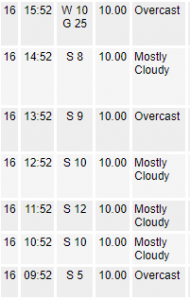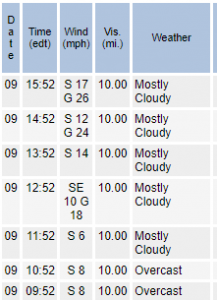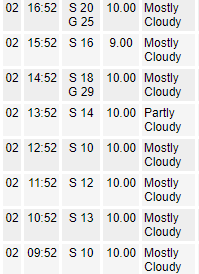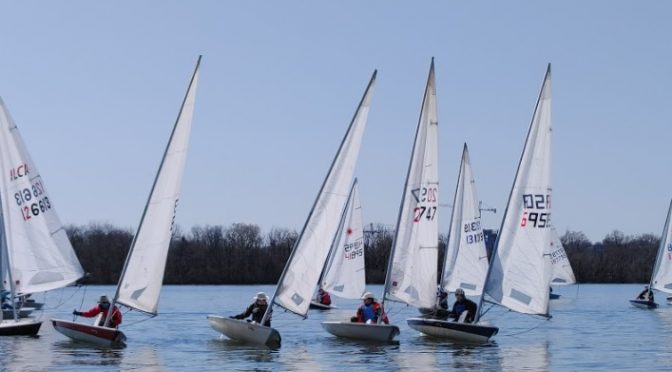I hear it was another “sporty” sailing day.
2021 Spring Series 6
We thought it was going to be a drifter, but NO! It was a great day for sailing with a steady southerly breeze. A westerly started mixing in toward the end of the day.
- Photos from Joe Ament: https://amentjoe.smugmug.com/Boats/PRSA-Spring-Series-6-16-MAY-2021/
- Video: Albacores & Bucs at the windward mark
- Video: Lightnings, Albacores, & Bucs at the windward mark
2021 Spring Series 5 – Mother’s Day
The wind built over the day to the point it was quite sporty. Nevertheless, a great day to be sailing.
Below are the day’s results and cumulative results for Spring Series 1 through 5. The cumulative results are scored by averaging the best 50% +1 races you sailed. If you sailed fewer than that number, you’re marked with a #.
2021 Spring Series 4
Beautiful spring day with a warm southerly breeze. John Van Voorhis and team gave us four Olympic course races that though reasonably long only took around 30 minutes due to the good breeze.
2021 Spring Series 3
A windy day. See below. Breeze from the NW sometimes N. Farley & team gave us 4 races.
2021 Spring Series 2
Crazy wind. Beautiful air. Sunny. Great to be on the water.
Let me know if you have issues with the scores or scoring. I’d like to get things sorted out early. Basically, I literally put in the finishes I get from the RC including the DNF’s and DNS’s they happen to notice and otherwise blank.
2021 Spring Series 1
A beautiful spring day. The wind started westerly and eventually went south.
Below are the results. “Blank” means the race committee did not finish or score you. The series results are by average score and requires that you sail half the races that day.
PRSA Spring Series Racing Underway!
Our PRSA Spring Series starts on Sunday, April 11! Please make sure you’ve read through the following information and completed the necessary steps so that you are ready to get out on the water as our PRSA Spring Series starts.
- Sign the 2021 PRSA COVID-19 Acknowledgement of Risk & Waiver: https://forms.gle/xKAAkXm7gh7xZanB6. Although things are looking better, we are still in the midst of a COVID-19 pandemic and some areas (including some places in our own area) are seeing upticks in cases and community spread. All participance’s — competitors and RC members — are required to sign this waiver in order to participate in PRSA Activities. You must sign the new 2021 waiver (the prior waiver for fall 2020 and 2020-2021 frostbite racing is no longer applicable).
- Review the PRSA COVID-19 Health & Safety Guidelines: https://docs.google.com/document/d/1ZdAoKmJyO2sD10bB9BjWX1V4xnXqDjfeh8WBBcWXG5Y/edit?usp=sharing
- Review the Notice of Race and Sailing Instructions for the Spring Series: http://potomacriversailing.org/spring-fall-sunday-series/
- Review the RC Service Requirements and sign up for RC Service: http://potomacriversailing.org/dues-rc-duty/
- Race Committee members should be sure to review all of our Race Committee & Boat Instructions carefully: http://potomacriversailing.org/dues-rc-duty/rc-boat-instructions/. Ensuring safe racing and taking proper care of our PRSA equipment is of paramount importance.
- Take note of a new federal requirement: effective April 1 a new federal law passed as part of the National Defense Authorization Act (which included a U.S. Coast Guard Reauthorization) requires a vessel operator to use either a helm or outboard lanyard or wireless engine cutoff switches (ECOS) when operating power boats under 26 feet in length. Please make sure to clip the cutoff lanyard to your life jacket when operating our skiffs.
As always, please feel free to reach out to your PRSA Executive Committee if you have any questions.
2021 Capital City Laser Regatta
2020-2021 LASER FROSTBITE SERIES #17
It’s Groundhog Day with another 3rd place write-up from me. Surely no frostbites today – sunburns were more likely. It was like a high school dance in winter with few participants appropriately dressed for the temperature, the venue not quite fit for purpose, yet everyone seemingly having a good time. We’re used to shifting winds on the Potomac, but today took it to a new level. It reminded me of Rumsfeld when he confidently said the WMDs were, “east, west, south and north somewhat.” Dan and Mike energetically boated around trying to have the marks in the right direction only to find that between the warning sound and the start not only might it change which end of the starting line was favorable, but which was the more logical windward mark. Big thanks to Dan and Mike for adding another great sailing day, and to Farley for delivering the attached results.






